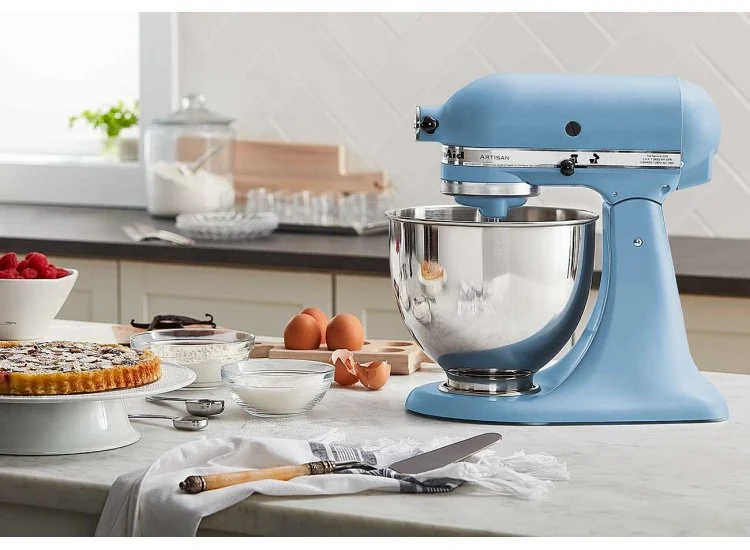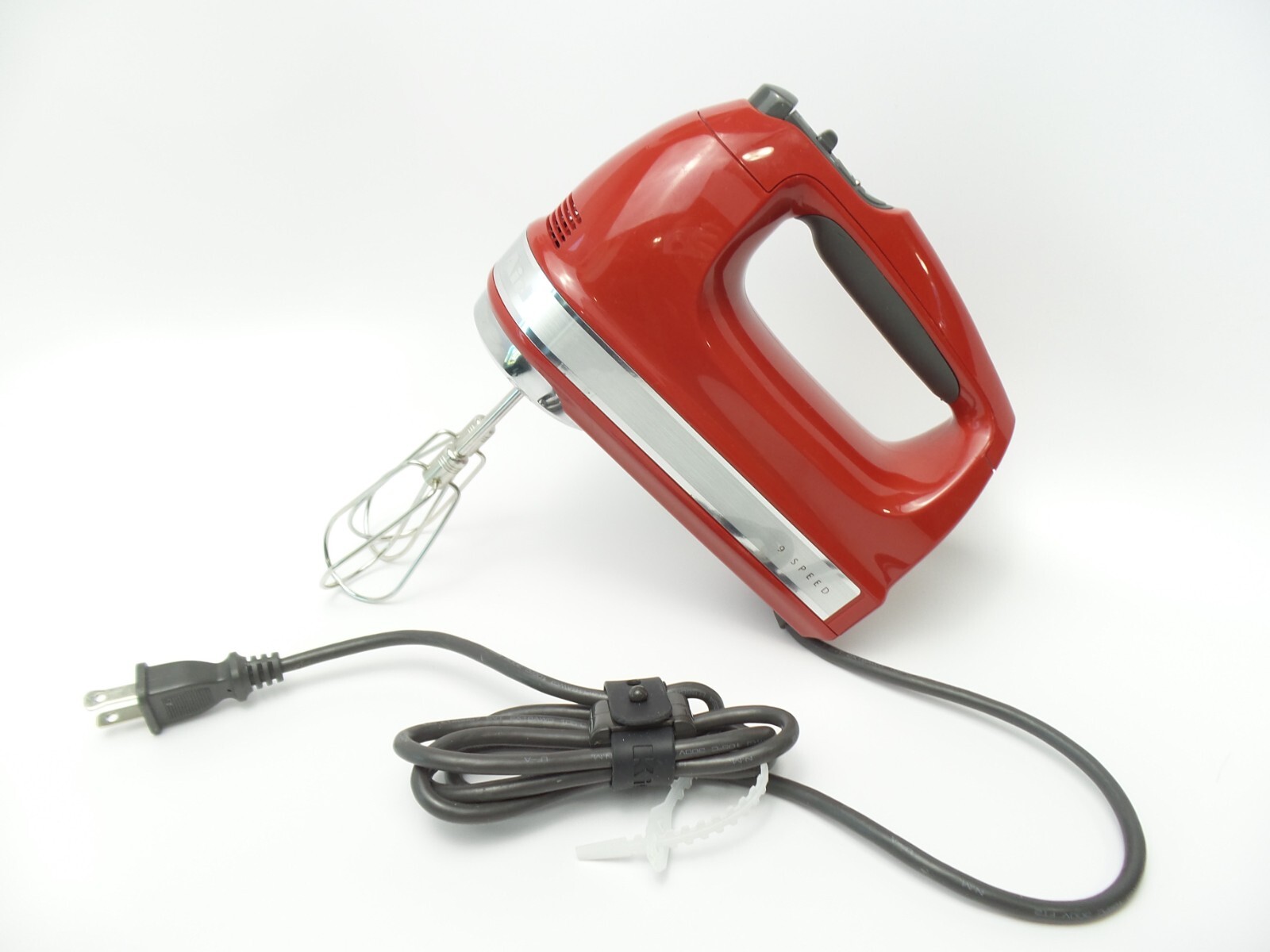Ever found yourself with a sore arm, a lumpy batter, and the sinking feeling that your baking dreams are deflating faster than a poorly made soufflé? You’re not alone. The secret to effortless cakes, cloud-like meringues, and creamy mashed potatoes often lies in a small but mighty kitchen hero. This guide on How To Choose A Hand Mixer is your roadmap to finding that perfect partner for your culinary adventures, saving you from future kitchen woes. Let’s plug in and get started.
A Quick Spin Through History
Before we dive into the nuts and bolts—or rather, the motors and beaters—let’s appreciate how far we’ve come. Not so long ago, whipping cream meant a grueling arm workout with a manual rotary egg beater. While charmingly retro, they were a testament to human endurance. The first electric hand mixer, patented in the early 20th century, was a game-changer, liberating home cooks from manual labor and paving the way for the sleek, powerful gadgets we see today. From a simple motor with two beaters, they’ve evolved into versatile tools with multiple speeds and specialized attachments.
What Should I Look for When Buying a Hand Mixer?
This is the million-dollar question, isn’t it? The answer is that the best hand mixer is the one that fits your needs. It’s about finding the right balance of power, features, and comfort. Here’s a breakdown of the key features to consider.
Power and Wattage: More Than Just a Number
It’s easy to get fixated on wattage, thinking higher is always better. While wattage gives you a rough idea of the motor’s power, it doesn’t tell the whole story. A well-engineered 250-watt mixer from a reputable brand can easily outperform a poorly designed 400-watt one.
- For light tasks: If you’re mainly whipping cream, egg whites, or mixing thin batters, a mixer in the 200-250 watt range is perfectly adequate.
- For heavy-duty jobs: For thicker cookie doughs, bread dough (with the right hooks), or frequent use, look for something with 250 watts or more, preferably with a high-quality DC motor, which provides better torque and is often quieter.
Think of it like a car engine: it’s not just about horsepower, but how efficiently that power is delivered to the wheels.
Speed Settings: From a Gentle Stir to a Furious Whip
Control is everything in the kitchen. A mixer with a good range of speeds gives you the precision you need for different tasks.
- Slow Start Feature: This is non-negotiable for me. A slow start prevents a “flour cloud” from erupting all over your countertop the second you turn the mixer on. It gently incorporates ingredients before ramping up the speed.
- Number of Speeds: Most mixers offer between 3 and 9 speeds. Five well-differentiated speeds are usually enough for most home cooks. More speeds offer finer control, which can be useful for delicate tasks like making macarons.
As professional pastry chef David Chen often says, “A slow start feature is the beginner baker’s best friend. It’s the difference between a clean kitchen and looking like you wrestled a bag of flour.”
The Attachments: Your Mixer’s Arsenal
The attachments are what make a hand mixer truly versatile. Here are the most common ones you’ll encounter:
- Standard Beaters (Turbo Beaters): These are your all-purpose tools for everything from creaming butter and sugar to mixing cake batter. Look for sturdy, stainless steel construction.
- Whisk Attachment: This single, balloon-shaped whisk is a godsend for aerating. It’s perfect for whipping egg whites into stiff peaks for meringues or making light and airy whipped cream in seconds.
- Dough Hooks: Shaped like corkscrews, these are designed for kneading bread or pizza dough. They take the hard work out of the initial kneading process, though for serious bread bakers, a stand mixer might be a better long-term investment.
Corded vs. Cordless: The Great Debate
The modern kitchen offers a choice between classic reliability and ultimate freedom.
- Corded Mixers:
- Pros: Consistent power, generally more powerful overall, and you never have to worry about a battery dying mid-mix. They are also typically less expensive.
- Cons: You’re tethered to an outlet, and the cord can sometimes get in the way.
- Cordless Mixers:
- Pros: Incredible convenience. You can mix anywhere, from the kitchen island to the stovetop. No cord to get tangled or dipped in your batter.
- Cons: Limited run time (usually 20-30 minutes), requires charging, and they can be less powerful and more expensive than their corded counterparts.
For most people, a good corded model is the most practical choice. But if you value convenience above all, a cordless hand mixer is a fantastic luxury.
Your Ultimate Checklist for Choosing a Hand Mixer
Feeling a bit overwhelmed? No worries. Use this handy checklist when you’re shopping.
- [ ] Ergonomics: How does it feel in your hand? Is it heavy? Is the handle comfortable and non-slip?
- [ ] Weight: A mixer that’s too heavy will cause fatigue quickly. Aim for a balanced feel.
- [ ] Slow Start: Does it have a low starting speed to prevent splatters?
- [ ] Attachments: Does it come with the attachments you’ll actually use (whisk, dough hooks)?
- [ ] Ejector Button: Is it easy to press for one-handed removal of the beaters?
- [ ] Storage: Does it come with a storage case or a way to keep the cord and attachments tidy?
- [ ] Cleaning: Are the attachments dishwasher-safe? Is the body easy to wipe clean?
- [ ] Brand Reputation & Warranty: Are you buying from a trusted brand with good customer support and a solid warranty?
Hand Mixer vs. Stand Mixer vs. Whisk: Which Do You Need?
It’s crucial to know where the hand mixer fits in the kitchen hierarchy.
| Feature | Hand Whisk | Hand Mixer | Stand Mixer |
|---|---|---|---|
| Best For | Small, quick jobs (e.g., scrambling 2 eggs) | Everyday baking, whipping, quick doughs | Large batches, heavy doughs, multi-tasking |
| Power | 100% manual | Good | Excellent |
| Convenience | Easy to clean/store | Compact and portable | Bulky, takes up counter space |
| Cost | $ | $$ | $$$$ |
| Effort | High | Low | Hands-free |
A hand mixer is the perfect middle ground. It’s more powerful and efficient than a whisk but more affordable and compact than a stand mixer, making it an essential tool for nearly every kitchen. To learn more, check out our in-depth comparison of hand mixers and stand mixers.
Cleaning and Storing Your Hand Mixer Like a Pro
Proper care will extend the life of your mixer significantly. It’s simpler than you think.
- Always Unplug First: This is the most important safety step. Never handle the beaters while the mixer is plugged in.
- Eject the Attachments: Press the ejector button and let the attachments fall directly into the sink. Most stainless steel attachments are dishwasher safe (check your manual!), but a quick wash with soap and water works just as well.
- Wipe Down the Body: Use a damp cloth to wipe the mixer’s housing. Never submerge the main body in water, as this will destroy the motor.
- Tidy Up: Wrap the cord neatly. If your mixer came with a storage case, use it! This prevents the attachments from getting lost in the back of a drawer.
Frequently Asked Questions (FAQ)
How many watts is good for a hand mixer?
A good hand mixer for general home use typically has between 200 and 250 watts. For heavier tasks like thick cookie dough, look for a high-quality model with 250 watts or more. The quality of the motor is often more important than the raw wattage number.
Can I use a hand mixer for bread dough?
Yes, you can use a hand mixer with dough hook attachments for the initial stages of kneading bread dough. However, it’s best for softer doughs and smaller batches. For frequent or heavy bread making, a stand mixer is a more durable and effective option.
Are expensive hand mixers worth it?
Often, yes. More expensive models from brands like KitchenAid or Breville typically offer better build quality, more efficient and quieter motors, more useful speed settings, and better-designed attachments. They tend to last longer and provide a better user experience.
How long should a hand mixer last?
With proper care, a good quality hand mixer should last for many years—often 5 to 10 years or even longer. The lifespan depends on the quality of the brand, how frequently it’s used, and what it’s used for.
What is the best brand for a hand mixer?
Several brands are renowned for their quality hand mixers. KitchenAid is often considered a top choice for its durability and performance. Other excellent brands include Cuisinart, Breville, and Hamilton Beach, which offers great value for its price point.
Your Perfect Mix Awaits
Choosing the right kitchen tool can completely transform your cooking and baking experience. It’s about turning a chore into a joy. By now, you should feel confident in how to choose a hand mixer that will become your trusted sidekick for years to come. Consider your needs, check for those key features like a slow start and comfortable grip, and you’ll be well on your way to smoother batters, fluffier creams, and happier baking. Now, go find your perfect match and get mixing! We’d love to hear about your experiences in the comments below.
